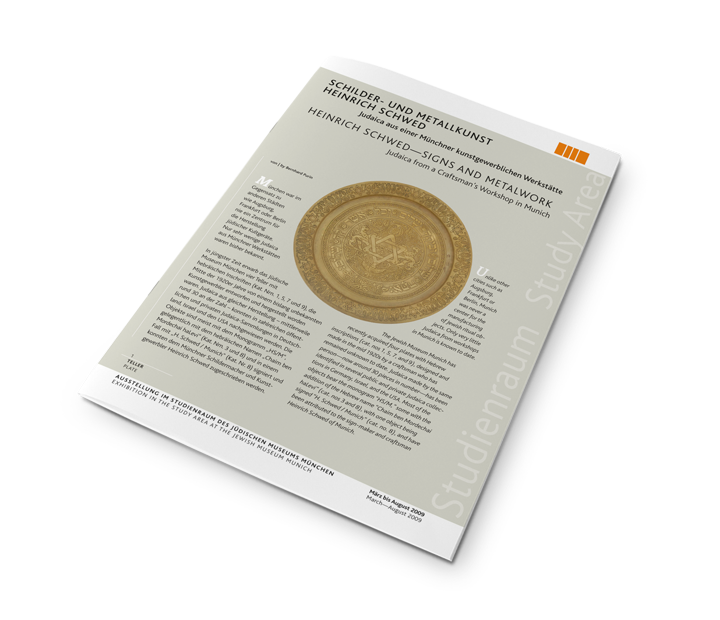Heinrich Schwed – Signs and Metalwork
Judaica from a Craftsman’s Workshop in Munich
Exhibition in the Study Area at the Jewish Museum Munich
Unlike other cities such as Augsburg, Frankfurt or Berlin, Munich was never a center for the manufacturing of Jewish ritual objects. Only very little Judaica from workshops in Munich is known to date. The Jewish Museum Munich has recently acquired four plates with Hebrew inscriptions which have been attributed to the workshop of Heinrich Schwed, who was born in 1880 in Reichmannsdorf near Bamberg. Subsequently, some 30 other works by Schwed have since been identified in museums and collections in…
Heinrich Schwed – Signs and Metalwork
Judaica from a Craftsman’s Workshop in Munich
Exhibition in the Study Area at the Jewish Museum Munich
Unlike other cities such as Augsburg, Frankfurt or Berlin, Munich was never a center for the manufacturing of Jewish ritual objects. Only very little Judaica from workshops in Munich is known to date. The Jewish Museum Munich has recently acquired four plates with Hebrew inscriptions which have been attributed to the workshop of Heinrich Schwed, who was born in 1880 in Reichmannsdorf near Bamberg. Subsequently, some 30 other works by Schwed have since been identified in museums and collections in Germany, Israel, and the USA.
Around 1900, Heinrich Schwed moved from Upper Franconia to Munich, and worked as a printer of advertisements, wine dealer, and liqueur producer. In 1923, he opened a craft workshop, and from 1926 a company for “signs and metalwork,” which was Aryanized in 1938 by the Nazi authorities. Shortly after the Kristallnacht, Schwed emigrated to Buenos Aires with his wife and their daughters. None of his four siblings, however, managed to emigrate. Three of them were deported in November 1941 and were shot five days after their arrival in Kaunas. One brother, who lived in what was termed a “privileged mixed marriage,” was deported to Theresienstadt in January 1945, but survived, and later returned to Munich.
The plates and signs made in 1923 and 1924, most of which are etched using a chemical process, some however being hand beaten, are not modelled on older examples, as is frequently the case with Judaica. Their artistic design and the technique used, based on the profession of the sign-maker, are the product of Heinrich Schwed’s own personal craftsmanship.
Duration of exhibition
March 3 - August 30, 2009
Where
Study Area
Curator
Bernhard Purin
Assistance
Biographical research: Sabine Brantl
Architecture
Architect Martin Kohlbauer, Vienna


![[Translate to Englisch:] Schilder- und Metallkunst Heinrich Schwed [Translate to Englisch:] Schilder- und Metallkunst Heinrich Schwed](/fileadmin/_processed_/9/8/csm_JMM_Ausstellungen_Studienraum_Heinrich_Schwed_588f2eccdc.jpg)